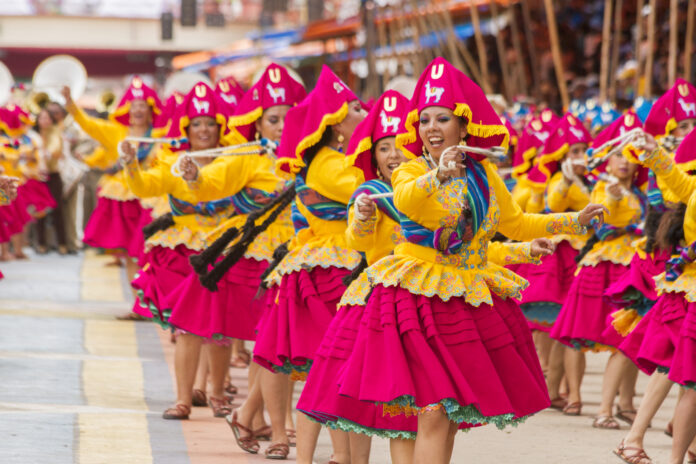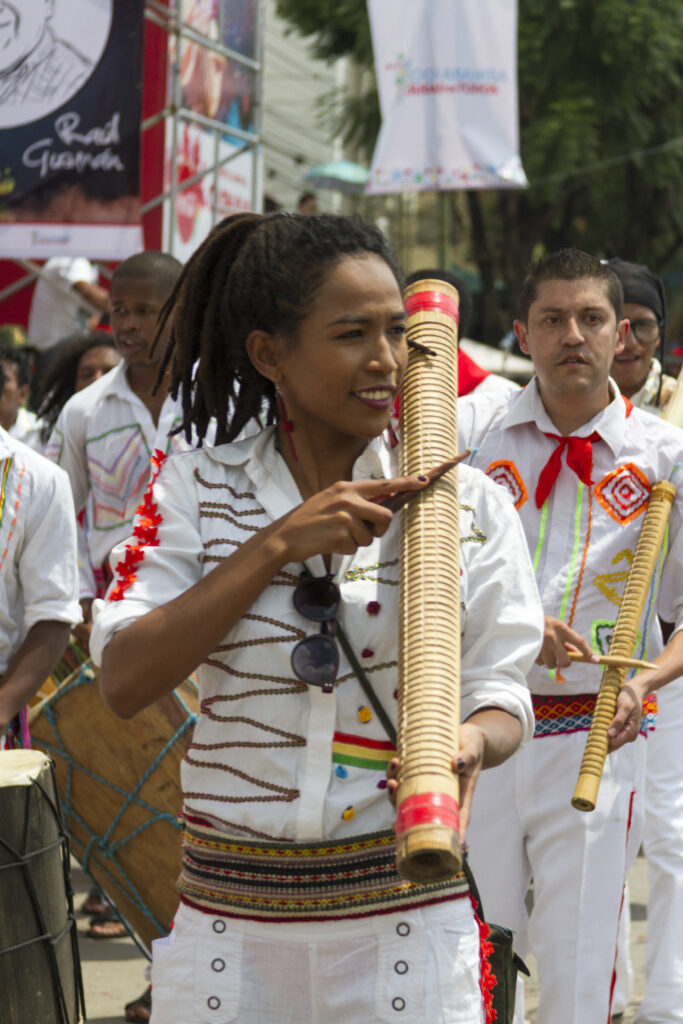In February last month, the Embassy of the Plurinational State of Bolivia in the Netherlands organized the celebration of the Alasitas and the Bolivian Carnival festivities for the international and Bolivian community, as well as for Bolivia’s friends, exhibiting miniature crafts, paintings, Bolivian dances, and didactic materials for children and promoting Bolivian tourist attractions, as the Uyuni Salt Flat and the Madidi Park.
The Oruro Carnival, celebrated every year, was inscribed on the Representative List of the Intangible Cultural Heritage of Humanity in 2008 and has been declared a “masterpiece of the oral and intangible heritage of humanity” by the United Nations Educational, Scientific and Cultural Organization (UNESCO) since 2001, as it constitutes an expression of Bolivia’s extraordinary identity and rich cultural diversity and heritage.
The city of Oruro, Bolivia —a significant pre-Columbian ceremonial center before its refoundation by the Spaniards in 1606— remained a sacred region for the Uru people despite the Spanish ban on the traditional ceremonies of the Great Festival of Ito. With the ceremonies maintained under the disguise of Christian liturgy and hiding Andean gods behind Christian icons to ultimately turn them into saints, the Festival of Ito then became the Festival of La Candelaria (February 2), with the Diablada as its chief dance and the Virgin of Socavon (the Virgin of the mining fields) as its main reference.
The renowned Oruro Carnival is celebrated for six days every year, between the months of February and March. It gathers more than 28,000 dancers, 10,000 musicians, and more than 50 dance organizations as part of the Procession (or Entrada) —the main event of this celebration—, which extends throughout the Oruro city streets in an uninterrupted four-kilometer procession, allowing visitors to experience and share firsthand the richness and cultural mix between the original traditions of yesteryear and Christian liturgies.
The Diablada, Morenada, Caporales, Tinku, P´ujllay and all of the other dances derive from other carnivals and festivals throughout Bolivia, such as the carnivals of yesteryear (Sucre), the Corso de Corsos (Parade of Parades), the Carnival of Concord (Cochabamba), the Miner Carnaval (Potosi), the Entrada del Gran Poder (La Paz), the Fiesta Grande de Santa Cruz, among others, which can be visited in Bolivia and which offer so much to share.

The Alasitas festivity, which means “buy from me,” in Aymara, is celebrated on January 24 in La Paz and on other dates in the rest of the Plurinational State of Bolivia. It is a cultural expression that dates back to ancient ancestral and pre-Columbian Tiwanaku traditions, namely, the celebration of fertility, Qapaq Raymi or the Great Festival of the Sun held on December 20, a day before the Summer Equinox (December 21), which included rituals for the renewal of the fertility of people, land, animals and all beings in general, with the Illas, “the children of lightning”, representing the spirit of the Ekeko, the god of abundance.
The illa is an amulet to attract fertility and economic and spiritual abundance, lacking the desire for accumulation of material goods. This idol was recovered in November, 2014 from a museum in Bern, Switzerland.

The evolution of the Alasitas festival resulted in the Ekeko, the “God of Abundance”, which is a folkloric portrayal of the illa, dressed in a hat and carrying food, money, vehicles, houses, and other goods represented in miniature.
The tradition is to buy a miniature crafted good representing what one needs the most in a particular year and have a yatiri [Andean shaman], and oftentimes a priest, bless the craft (called the act of ch’alla) in order for it to come true.



